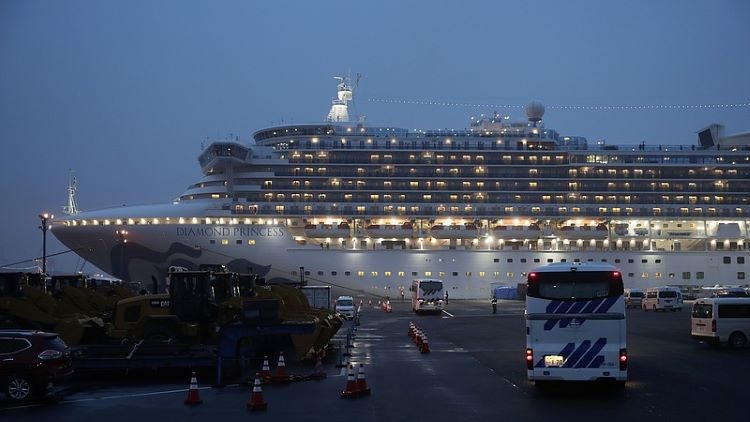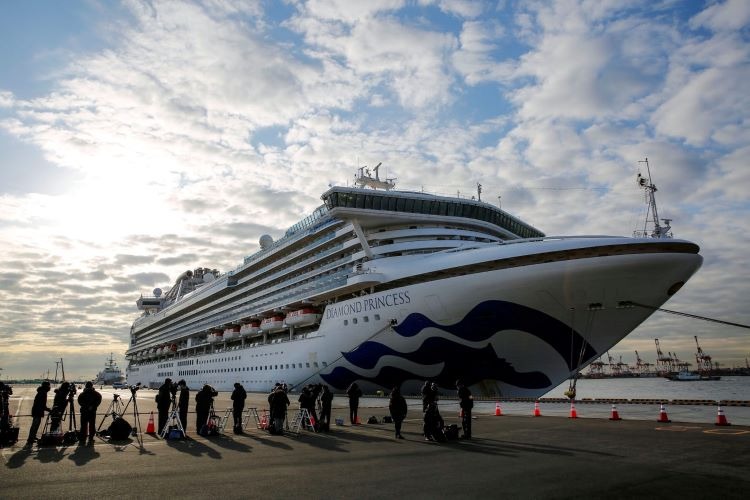At this point, it would be nearly impossible not to be aware of what’s going on with the COVID-19 outbreak, also known as the coronavirus pandemic. However, just a few months ago, many people in the United States didn’t have coronavirus on their radar, much if at all.
Even before most people were thinking much about coronavirus, however, Princess Cruise Lines was making news.
Now, Princess Cruise Lines is facing coronavirus lawsuits, and you may be wondering what happened. The following are some of the issues that led to the Diamond Princess controversy.
Overview
According to the Centers for Disease Control and Prevention, each year, an estimated 30 million passengers travel on 272 cruise ships throughout the world. Cruise ships bring people from many different backgrounds and locations into one relatively small space for days. This can make them, unfortunately, a breeding ground for respiratory illnesses like SARS-CoV-2 or COVID-19.
The COVID-19 outbreak was first ID’d in Wuhan, China, in December 2019, although now it’s affecting nearly every country. For many people in the U.S., we first started hearing about the outbreak in a significant way because of cruise ship transmission.
Passengers on some cruises were also predominantly older, making them a group that would be most likely to see severe effects of a respiratory illness like COVID-19. Through most of February, the largest COVID-19 cluster outside of mainland China were on the Diamond Princess ship, which was quarantined in Japan starting on February 3.
There were also COVID-19 cases on the Grand Princess ship, which was off the coast of California, and by mid-March, there were cases of COVID-19 associated with dozens of other ship voyages. The CDC issued a level 3 travel warning March 17, with the recommendation that all worldwide cruise travel be deferred.

The Diamond Princess
The Diamond Princess left Yokohama, Japan, on January 20, 2020. The ship had around 3,700 passengers and crew, and on January 25, a passenger with symptoms left the ship in Hong Kong. He was tested and confirmed to have COVID-19.
The ship returned to Japan on February 3, but only after stopping in three countries a total of six times.
The ship was quarantined when officials from Hong Kong notified Japanese officials. On February 5, passengers were told to stay in their cabins, and the crew had to keep working and weren’t isolated. Anyone who had symptoms or who had close contacts who tested positive for the virus left the ship and were hospitalized.
From February 16 to 23, around 1,000 people returned by air to their home countries. This included 329 to the U.S., where they were then told to quarantine or isolate. Based on symptoms or close contact, some passengers were quarantined on land in Japan, and crew quarantined on the ship for 14 days or returned home.
We now know that around half of the cruise ship passengers on the Diamond Princess who tested positive for coronavirus were asymptomatic at the time they were tested. The CDC has said the large number of asymptomatic people on the ship could explain why the infection rate was so high.
There were also traces of the virus found on different surfaces in the cabins of infected people, both asymptomatic and symptomatic for up to 17 days after they left their cabins, but before disinfection had taken place.
The Grand Princess was a ship that sailed round trip from San Francisco between February 11 and February 21. It made four stops in Mexico, and then most of the crew and a few passengers stayed on board for a second voyage that was set to return March 7. A California clinician reported two patients with COVID-19 symptoms who’d been on the first voyage, and one of them had a positive test for the virus.
Between the two ships, there were a total of 800 COVID-19 cases and ten deaths.
The Response
Now, the CDC and the federal government are looking at the responses of these ships. The response in terms of health aboard was to limit transmission and also to prevent the virus from leaving the boat.
Now, however, there may be legal issues that occur because people who were on the Diamond Princess and other ships want to know if the cruise line actually took all the appropriate precautions to protect them.
Cruise ships do have what’s called a duty of care to protect passengers. We currently don’t know every step that was taken to prevent the spreading of COVID-19 on the ships, and whether or not the cruise line did all it could. Along with issues relating to the actual suppression of the virus, some have expressed concerns over the individual rights of passengers.
For example, a doctor who works at the Johns Hopkins Center for Health Security said that the quarantine actually violated the rights of passengers and let the virus “pick them off one-by-one.” Critics have said keeping passengers and crew on the ship and poor hygiene practices helped spread the virus rather than containing it.
Anthony Fauci, who is the director of the National Institute of Allergy and Infectious Diseases, has expressed a similar viewpoint saying that people were getting infected on the ship and their measures failed. Passengers who were on board the Diamond Princess have said they didn’t receive a lot of information and many didn’t understand they were already potentially exposed to the virus.
Other complaints have included the fact that during screenings, patients said they were often forced to stand very close to others and that monitoring practices such as using thermometers weren’t done properly. Passengers have said they were treated like prisoners, with meals that usually included things like stale bread and ham.
How much of this carries legal weight isn’t necessarily known right now, but undoubtedly the cruise industry is under immense pressure, financially and otherwise. What happened on the Diamond Princess and other ships may prove to be an issue in the industry well after the immediate threat of COVID-19 has passed.



